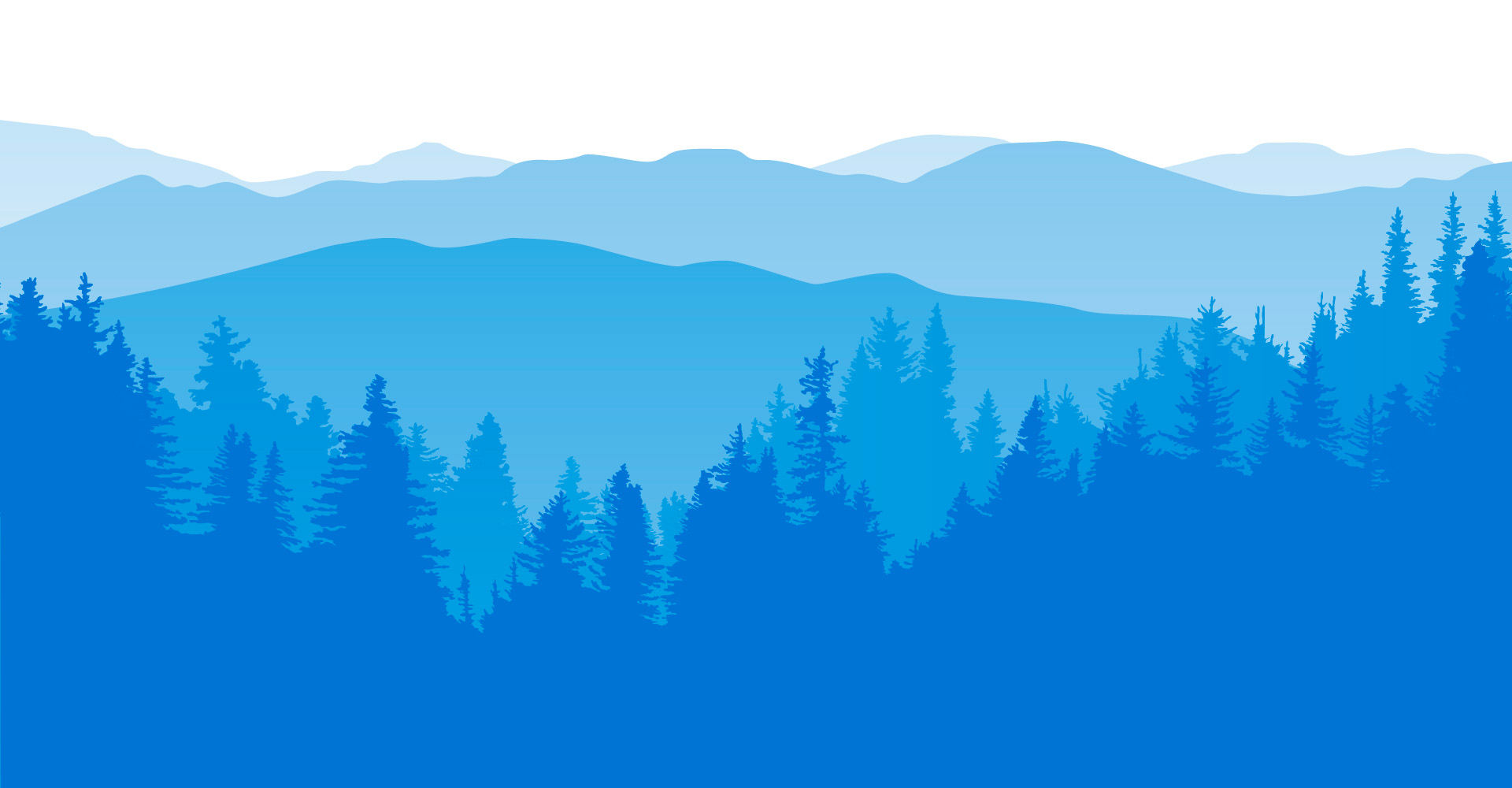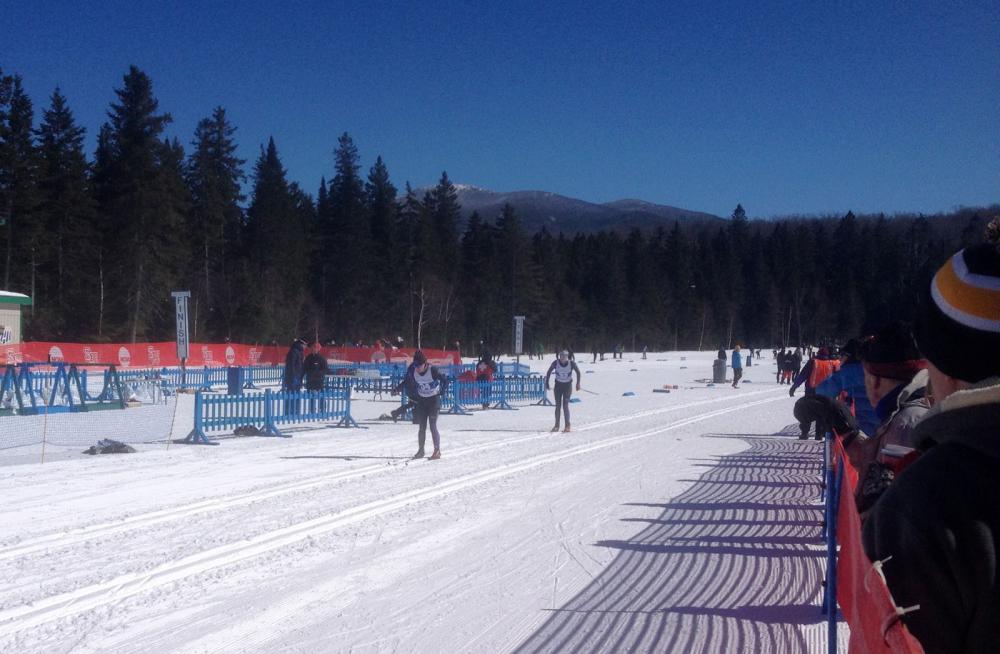
Now, I’ve been skiing both downhill and cross-country since I was a little kid. My dad was an avid skier, and he had my sister and I on skis almost as soon as we could walk. So I have been operating under the assumption that I possess enough muscle memory and coordination to successfully achieve any cross-country skiing challenge.
I was wrong.
Backstage pass
It all started with a simple introduction to a new style of Nordic skiing.
I’ll admit that my job does give me the opportunity to access what I’ll call the “Adirondack backstage.” I sometimes have unique opportunities to visit top secret places, get the inside scoop on news before the media does and interact with some of the region’s most interesting and influential folks.
So when my coworker Sue set up an opportunity for interested staff members to try skate skiing, also often referred to as freestyle skiing, with an expert instructor, I opted in. And it wasn’t surprising that with our Adirondack backstage advantage, ours wasn’t just any old expert instructor. We were to learn from none other than Kris Cheney Seymour, the Nordic program and events manager at Mount Van Hoevenberg and coach of a list of notable Nordic Olympians that includes locals Billy Demong and Lowell Bailey.
Originally a larger group, work responsibilities pared our class down to a manageable three students by the day of our lesson. Sue, Kelly and I arrived promptly at Mount Van Hoevenberg that afternoon to meet Kris and to get fitted with boots, skis and poles from their rental fleet.
After a philosophical prep talk in which Kris compared the basics of skate skiing to the act of patting your head and rubbing your tummy in a circle simultaneously, we slowly made our way outside to step into our skis and try it for ourselves.

Tech
So, there are two real basic styles of cross-country skiing: classic and freestyle.
The classic style is also called traditional style. It involves a straight ahead gliding type of motion. That’s the type of cross-country skiing with which I’m familiar.
Ski skating, also known as freestyle cross-country skiing, is characterized by v-shaped glides and edging movements — just like ice skating and rollerblading. That’s the tummy-rubbing part. The head-patting is that the poles go the other way, from front to back. At least that’s how I interpreted it.
Both of these types of skiing have their own unique type of equipment. I own classic ski equipment: some vintage wax-able skinny skis, poles and low cut, comfortable boots with what are called NNN bindings, which have a small bar that locks the toes of your boot into the matching ski binding. Directly underneath my feet on the ski is where I apply grip wax of varying colors depending on the temperature. When I put weight on my “push off” ski, it grips the snow and allows me to propel my other ski forward. Wax-less classic skis have “scales” in that grip area that accomplish the same thing as the wax — although not as effectively, I understand.
The skate skis we were stepping into were somewhat different. Though they were similar in width, they were slightly shorter, stiffer, and there was no feature on the bottom except for one straight line down the middle of the entire length of the skis. The boots went up just over my ankle and had an exoskeleton that provided extra support.
The three of us students clipped our boots into the skate skis — with the help of Kris, who had to clear snow from the bars on the NNN-BC bindings. These look similar to my own classic ski bindings but apparently date back to the old testament.
Now, I should mention that Sue, Kelly and I are not newbies to strapping boards on our feet in general. We’re all longtime Alpine skiers, and all have experience with classic cross-country skiing. So we were really just looking for some basic pointers about this new style of skiing so we could add a new skill to our already very full arsenals.
Kris moved on his skis easily, a mere 25 feet or so away, and then instructed us to just hold on to our poles in front of us, and to shuffle toward him. It looked easy enough, but the skis are VERY slippery. (Yes, we caught our smooth moves on video.)
We looked a little bit, well, tentative as we shuffled toward him, then stopped while he showed us the basics to get us started. Number one: Don’t lean back. Once you lean back, there’s no way to recover. Lean forward, and you can always step onto a ski to regain your balance.
He told us to hold our poles out in front of us and to try the skate motion, moving toward the end of the stadium area — or as I like to call it, the area where people in the lodge, timing building, ski racks, and parking lot are all watching and judging you.
The movement was actually not too bad, and is similar to skating to the chairlift on alpine skis. I would describe our first steps as jerky, but we quickly smoothed out our strides a bit.
We were ready to add our poles to the mix. The poles are taller than classic ski poles, and had a funky velcro strap that goes around your thumb and forces a correct grip at the top of the pole. Kris then described the various styles of skate skiing.
- Apparently, depending on the speed you’re going, one would implement “Diagonal V” as a “low gear”, using a single pole on the stationary side as you step forward with the other ski.
- V1 is what I had seen on TV. Double pole on the same side with an offset skating movement. Kris didn’t explain this one to us at our first lesson, to his credit. But I looked it up and as a responsible blogger, I’m including it here.
- V2 is to double pole on alternate sides — with each left and right step of the ski.
- V2-alternate is what we were sort of intuitively doing already, according to Kris. In the V2-alternate mode, you double pole along with your “resting” ski. In my case, I was using both poles to propel forward along with stepping on my left ski, then falling onto my right ski while recovering my poles to push again along with my left.
- The top gear of speed is to ski without use of the poles, presumably downhill or when racing very fast.
We would soon wish that we’d had a V8.
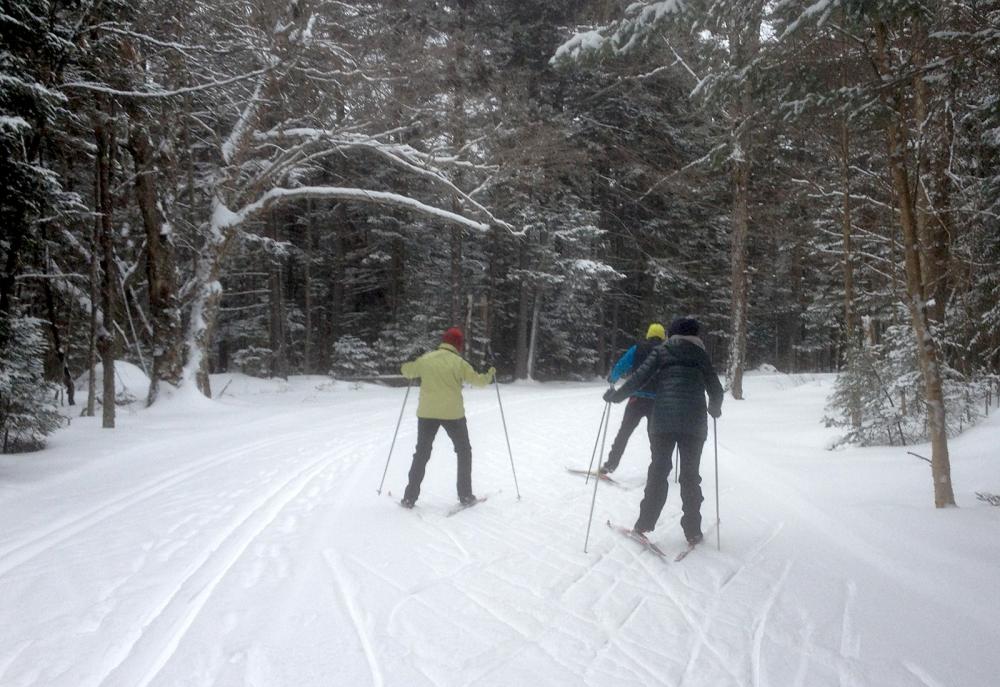
The Challenge
When I told my former-skate-ski-racing husband that I’d be trying this style of skiing days prior, he playfully offered the following advice: “I hope you bring an extra lung!”
As Kris led us off onto a short, mostly flat loop to try out our new skills, we were doing all right, technique-wise, pushing along forward with the skis, using a slight snowplow on downhills if necessary. But the technique was one thing; oxygen deprivation was another.
As far as fitness, I typically try to remain in what I call “5k shape,” which means that if I am forced, I can finish a 5k running race at any time. Turns out I might just have fallen a wee bit out of 5k shape this winter.
Skate skiing is terrific aerobic exercise. I know this because we had to stop every few hundred feet to catch our breath. I’m not sure we fooled Kris by excusing the frequent breaks as required stops to take pictures or adjust the video camera.
About a year later, we arrived at the end of our first loop and first lesson back at the stadium area, and Kris took off to watch his son in a race that was about to start. But before he left, he told us to keep skiing on our own, and he presented a challenge. We were just four weeks away from the inaugural Nordic Ski Festival that included a new event — a 6.25 and 12.5k race. He offered to be our coach if we would enter the 12.5k race. We said initially that we’d think about it. But he had planted a seed.
By email that week, we confirmed our intention to take him up on his offer.
Couch to 12.5k
Very soon after our first lesson, another one bit the dust. Our buddy Kelly sustained an injury that took her out of what I called the “Couch to 12.5k” training program.
Sue and I were still in, and Sue headed back to Van Ho the next weekend to continue her training. I, on the other hand, went snowshoeing with my dog that weekend, which is not equal to training on skate skis.
The following week, Sue and I finally arranged to meet at Van Ho together after work one day.
We went out on a loop together, and noticed that even though we had spent a lot of time talking about skate skiing, we still had to stop frequently while actually doing it. We skied the same loop we had done with Kris at our initial lesson, and even added an extra short loop. All told, we had probably skied a total of 3 kilometers, and we couldn’t do it without stopping a few times to catch our breath.
At two weeks out from race day, Kris sent us encouraging email instruction. He suggested that we should each ski the race course in the coming week. And he emphasized the fact that we should stay hydrated.
Our training montage
The following weekend, I got up early on Saturday morning and headed to Mount Van Hoevenberg to ski the race loop. I drank lots of water ahead of time. And I brought with me my classic ski gear.
I arrived early enough to see our coach, and let him know that I was committed to doing the race, but that I’d have to do it on my classic skis. He was outwardly supportive of my decision, and helped me to obtain special “Adirondack backstage” permission to ski the race loop, despite the fact that it was closed and being readied for a high school race to be held the next day.
It was a gorgeous, sunny day, and I had a blast skiing on my familiar classic skis, though I was certainly aware that I wasn’t breaking any speed records. I did the 6.25k loop — just once. The race would be twice that distance, but I was pretty sure I could do it. It was such a nice day that I decided to head over to the groomed trails at Cascade Cross Country Ski Center to do an additional loop there.
Sue apparently arrived just after I had, and separately, she and her husband skied on THEIR classic ski gear, too. We were still in for the race, but had both given up on thinking we could accomplish it with the skate skis.
This decision to downgrade our equipment should not be considered a reflection on our coach. We were, after all, not in our very best shape — not his fault. But we WERE well hydrated, a tremendous credit to his leadership.
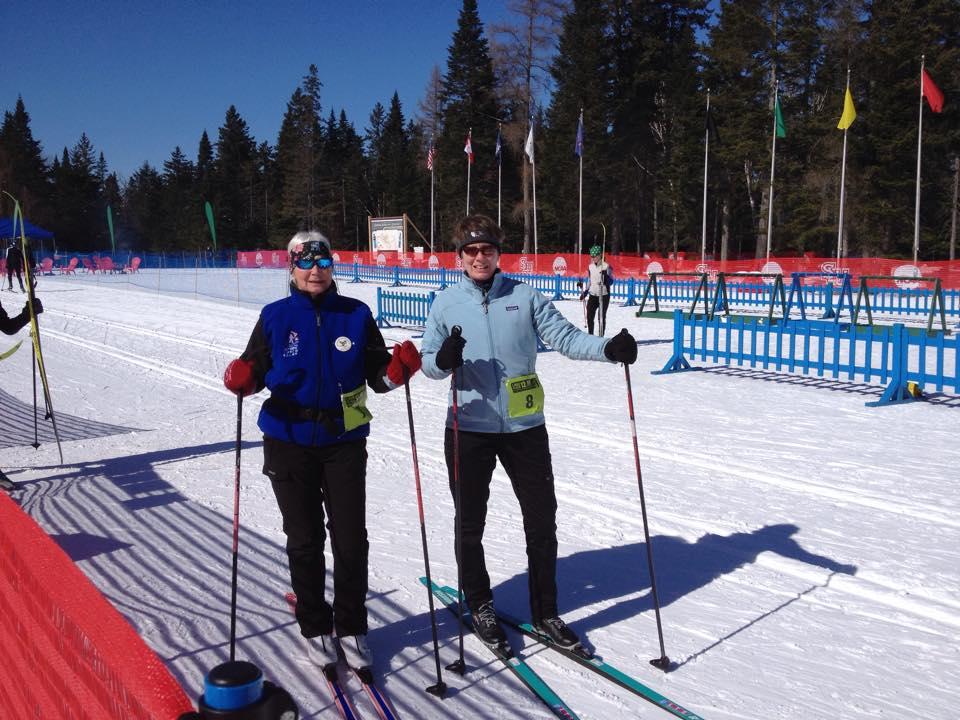
Race day
The race was nothing like I’d expected. And that’s a positive thing.
I categorized the inaugural Lake Placid Nordic Festival as a success as soon as I realized I’d have to park my car in an alternate lot. Our 12.5k race began at 1 p.m., but there were wax demos and a collegiate race going on when I arrived just before noon.
The invisible announcer guy whose voice emanated from the speaker system kept talking about the Citizens Race that would follow the collegiate race. Contrary to my first impression, he wasn’t talking about a ski race for which the winners would receive U.S. citizenship. Rather, that was OUR race — called a “citizens” race because it’s open to the public, and team or organization affiliation was not necessary.
I’ve been in 5k running races and a smattering of relays and other competitions. Depending on the setting and stakes, it is often intimidating. This race was different.
Sue and I followed the crowd to the starting area, setting ourselves up near the back of the crowd of about 80 participants. As the announcer told us we had one minute to the starting gun, there was a girl in her teens to my left and a man in his 80s to my right. I overheard a couple of people giving instruction to their under-10 kids on skate skis ahead of me. It was a friendly, low-key group.
We lined up at the back of the rest of the classic skiers, the freestyle participants off to our right. The starting gun went off and so did we.

For the first kilometer or so, I was surrounded by people, and I jumped into the parallel tracks groomed especially for classic skiers as much as possible. The beginning of the loop includes a couple of steeper uphill sections, and that’s where I did actually pass a couple of other skiers by stepping out of the tracks to the right and implementing a herringbone technique to get to the top.
Soon, though, I found myself all alone on the course. There were marshals at most junctions, so I didn't wander onto the wrong trail, but I realized that I was either way in front, or far behind everyone else in the race.
I finished the first loop, grabbing a cup of Gatorade as I passed through the stadium to the sounds of cheers and cowbells. I didn’t take note of my time but I knew my second loop would be slower. My buddy Bob confirmed for me as I skied by him that I WAS ahead of Sue.
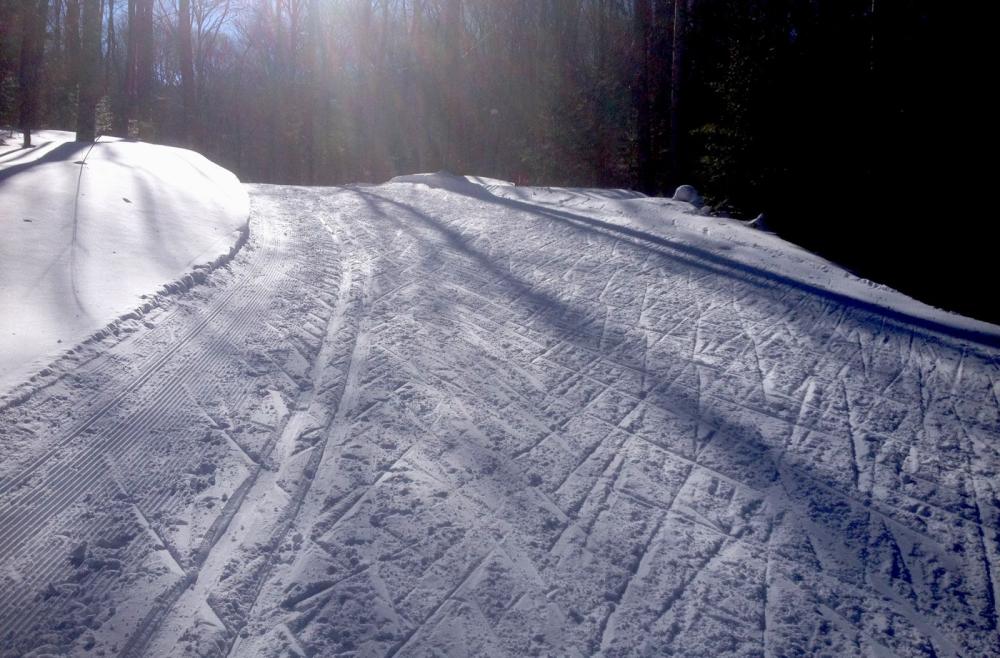
Fast forward through my slow second loop, during which I remained absolutely alone, but enjoyed the scenery, to the finish. As I heard the loudspeaker as I approached, I recognized that it was my coach on the microphone cheering as I powered through the finish line.
As I accepted my finisher’s pint glass, I realized that Kris wasn’t just cheering; they had already started the awards ceremony, and he was announcing the winners of the various age groups. Those winners included Sue, whose name he called out as I was taking off my skis. (It turns out that Sue won in her age group for the 6.25k race — she had decided to finish after the first loop. An admirable effort!)
In the end, there were only a couple of people who finished behind me for the 12.5k. But I had, indeed, finished, and I had beaten those octogenarians by several minutes!
Takeaways
- Hydrate, hydrate, hydrate.
- A good coach is worth a thousand kilometers.
- Slow and steady does not always win the race, but you can't beat the scenery, either!

See you on the trails?
For those who love snow, this winter has made you very, very happy. Conditions at Whiteface, Pisgah, Oak, Titus, Big Tupper, and Gore alpine hills are all terrific. I ran into Tony Goodwin, who is the head of the Adirondack Ski Touring Council, before the race. He told me that visits to the cross-country trail conditions website are way down this year. Makes sense, since no one questions the excellent snowpack we’ve had all winter!
In addition to the hundreds of miles of backcountry options, we’re fortunate to have so many great groomed trails in the region. Check out the meticulous trails at Mount Van Hoevenberg, Cascade Cross Country Ski Center, Nordic Ski & Snowshoe Center at Whiteface Club & Resort, Tupper Lake Groomed Cross Country Ski Center, Dewey Mountain Recreation Area, the Paul Smith’s VIC and the Adirondack Interpretive Center in Newcomb, to name a few!
There’s still time to plan a visit this winter, and to try any of the many styles of skiing, whether it’s alpine, classic cross-country, skate skiing, or even backcountry!
- Kim Rielly is the director of communications for the Regional Office of Sustainable Tourism

